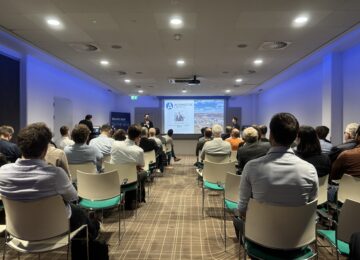High social value batteries at solar farms
CE Delft conducted a study commissioned by ESNL member Enexis on the tipping point of large-scale batteries. The study shows that batteries, especially when placed at solar parks, offer great social added value. Batteries at solar parks ensure that more solar panels can be placed on the same grid connection, that less electricity needs to be thrown away (curtailment) and that electricity can be supplied at times when other, more polluting power plants need to be used. Batteries at solar farms thus provide social value in the form of CO2 reduction.
Specifically, the study shows that with 5.5 GW of batteries, an additional 7.5 GWp of solar panels can be connected without grid reinforcement. These additional solar panels allow 5 TWh per year of additional renewable generation to be realized 5 to 10 years earlier. This lowers the price of electricity and provides between 1.6-2.2 Mton per year of CO2 reduction.
This demonstrates the social added value of batteries, but is battery deployment economically viable? CE Delft concludes that through a combination of the imbalance market with congestion management or aFRR, a profitable business model for batteries will emerge from 2021. Grid batteries become profitable earlier than other battery types. Under current policy, batteries at solar farms will not become profitable, resulting in only limited achievement of the CO2 reduction demonstrated above.
To make the business case for batteries at solar farms more attractive, CE Delft recommends creating additional grid space in the short term by facilitating cable pooling with storage. Energy Storage NL, together with Invest NL and Ventolines, is currently working on a model agreement for cable pooling with storage, expected in the first half of 2022.
CE Delft also indicates that in the short term more clarity is needed about the possibilities and impossibilities of upgrading unless and when grid operators are obliged to connect more generation and consumption to the same grid capacity. In the medium term, various subsidies are conceivable to make batteries, specifically for solar parks, profitable. The desirability and effectiveness of these subsidies must be further investigated.
CE Delft's entire report is here read back.





